| Weight | 1 lbs |
|---|---|
| Dimensions | 9 × 5 × 2 in |
| host | mouse |
| isotype | IgG1 |
| clonality | monoclonal |
| concentration | concentrate, predilute |
| applications | IHC |
| reactivity | human |
| available size | 0.1 mL, 0.5 mL, 1 mL concentrated, 7 mL prediluted |
mouse anti-ACTH monoclonal antibody (ZM98) 6010
Price range: $160.00 through $528.00
Antibody summary
- Mouse monoclonal to ACTH (Corticotropin)
- Suitable for: Immunohistochemistry (formalin-fixed, paraffin-embedded tissues)
- Reacts with: Human
- Isotype:IgG1
- Control: Pituitary
- Visualization: Cytoplasmic
- 0.1, 0.5, 1.0 mL concentrated, 7 mL prediluted
mouse anti-ACTH moclonal antibody ZM98 6010
| target relevance |
|---|
| Protein names Pro-opiomelanocortin (POMC) (Corticotropin-lipotropin) [Cleaved into: NPP; Melanotropin gamma (Gamma-MSH); Potential peptide; Corticotropin (Adrenocorticotropic hormone) (ACTH); Melanocyte-stimulating hormone alpha (Alpha-MSH) (Melanotropin alpha); Corticotropin-like intermediary peptide (CLIP); Lipotropin beta (Beta-LPH); Lipotropin gamma (Gamma-LPH); Melanocyte-stimulating hormone beta (Beta-MSH) (Melanotropin beta); Beta-endorphin; Met-enkephalin] |
| Gene names POMC,POMC |
| Protein family POMC family |
| Mass 29424Da |
| Function FUNCTION: [Corticotropin]: Stimulates the adrenal glands to release cortisol.; FUNCTION: [Melanocyte-stimulating hormone alpha]: Anorexigenic peptide. Increases the pigmentation of skin by increasing melanin production in melanocytes.; FUNCTION: [Melanocyte-stimulating hormone beta]: Increases the pigmentation of skin by increasing melanin production in melanocytes.; FUNCTION: [Beta-endorphin]: Endogenous orexigenic opiate.; FUNCTION: [Met-enkephalin]: Endogenous opiate. |
| Subellular location SUBCELLULAR LOCATION: Secreted {ECO:0000250|UniProtKB:P01193}. Note=Melanocyte-stimulating hormone alpha and beta-endorphin are stored in separate granules in hypothalamic POMC neurons, suggesting that secretion may be under the control of different regulatory mechanisms. {ECO:0000250|UniProtKB:P01193}. |
| Tissues TISSUE SPECIFICITY: ACTH and MSH are produced by the pituitary gland. |
| Post-translational modification PTM: Specific enzymatic cleavages at paired basic residues yield the different active peptides. {ECO:0000269|PubMed:2839146}.; PTM: O-glycosylated; reducing sugar is probably N-acetylgalactosamine. |
| Involvement in disease DISEASE: Obesity (OBESITY) [MIM:601665]: A condition characterized by an increase of body weight beyond the limitation of skeletal and physical requirements, as the result of excessive accumulation of body fat. {ECO:0000269|PubMed:12165561}. Note=Disease susceptibility may be associated with variants affecting the gene represented in this entry.; DISEASE: Obesity, early-onset, with adrenal insufficiency and red hair (OBAIRH) [MIM:609734]: An autosomal recessive disorder characterized by early-onset obesity due to severe hyperphagia, pigmentary abnormalities, mainly pale skin and red hair, and secondary hypocortisolism. {ECO:0000269|PubMed:9620771}. Note=The disease is caused by variants affecting the gene represented in this entry. |
| Target Relevance information above includes information from UniProt accession: P01189 |
| The UniProt Consortium |
Data
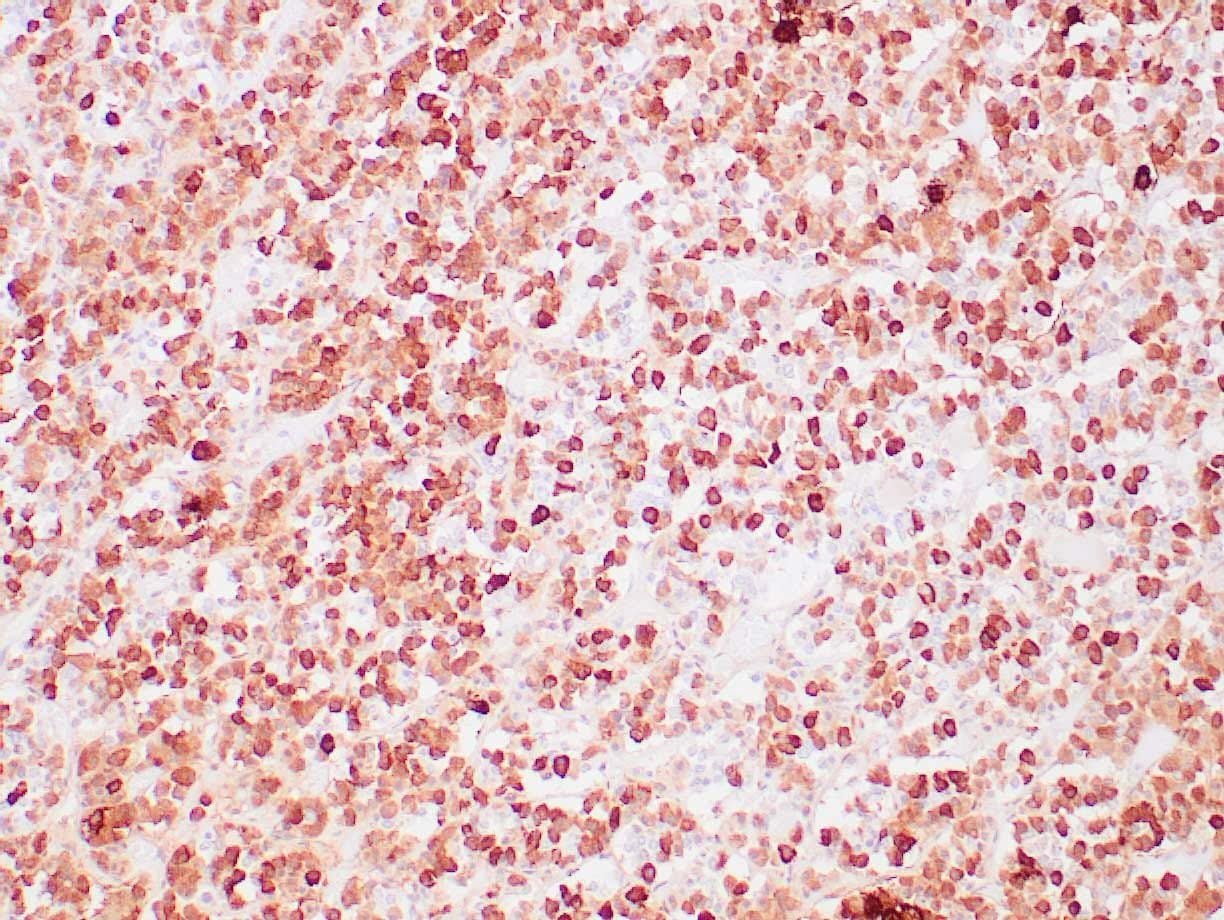 |
| Human pituitary stained with anti-ACTH monoclonal antibody using peroxidase-conjugate and DAB chromogen. Note the cytoplasmic/nuclear staining of ACTH secreting cells. |
Publications
| pmid | title | authors | citation |
|---|---|---|---|
| We haven't added any publications to our database yet. | |||
Protocols
| relevant to this product |
|---|
| IHC |
Documents
| # | SDS | Certificate | |
|---|---|---|---|
| Please enter your product and batch number here to retrieve product datasheet, SDS, and QC information. | |||
Only logged in customers who have purchased this product may leave a review.
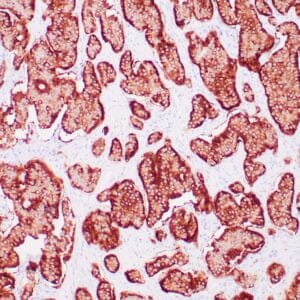
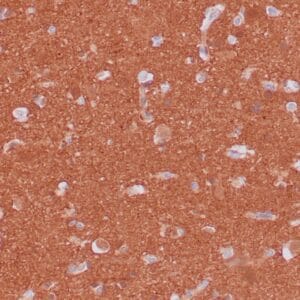
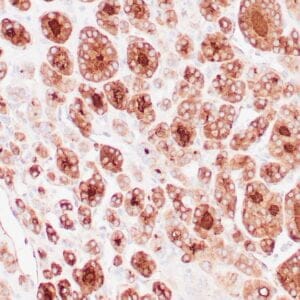
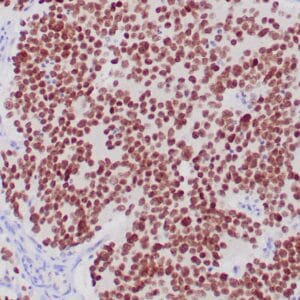
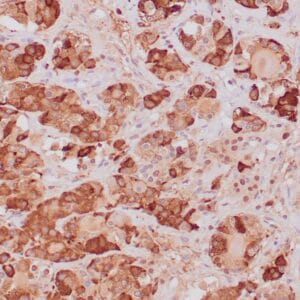


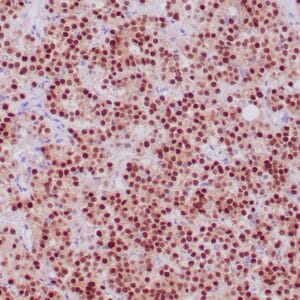

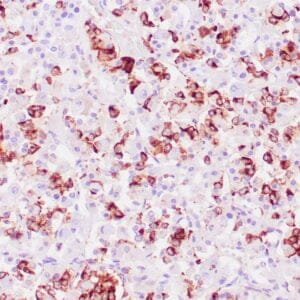

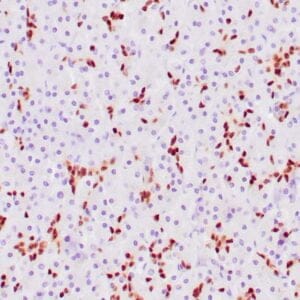
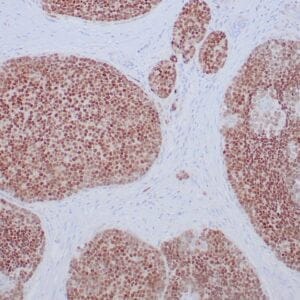
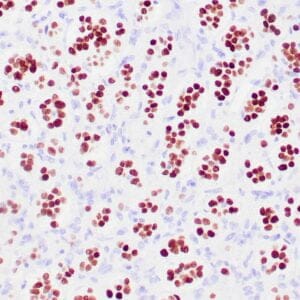
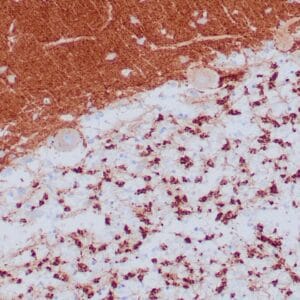
Reviews
There are no reviews yet.